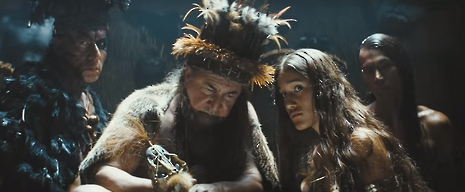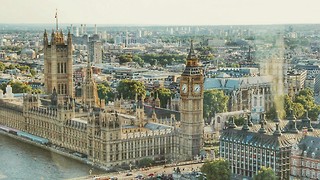The Wild West
Ed Thicknesse considers the portrayal of Native Americans in Hollywood

In Alejandro G. Iñárritu’s latest suffer-athon The Revenant, Leonardo DiCaprio takes on Mother Nature herself. He crawls through snow, swims through rapids, and even sleeps in a horse. Swamped, but not overcome, this set piece recurs again and again throughout not only the film, but the whole genre of the Western, as the American frontier is made the backdrop for the most intimate of revenge narratives; man constantly asserts his domination of the natural world, and becomes literally supernatural in doing so.
In such depictions of the civilised world’s conquest of the natural, the role of Native American cultures has, historically, been sidelined or ignored. At best, they are assimilated with and dominated by the natural world, and are portrayed as stewards or guardians, as in Terence Malick’s The New World, or even Disney’s Pocahontas. At worst, they are demonised, made the cultural ‘Other’, the embodiment of the civilised world’s darkest fears. A third, and possibly more problematic, alternative is offered by films such as the box office catastrophe The Lone Ranger or John Maclean’s Slow West, where Native Americans act as sidekicks or assistants to various all-American heroes. In each instance, the vision of Native American cultures becomes a footnote in the narrative of American expansion, neglected and swept aside.
However, the subject has occasionally been approached from the other side: both Kevin Costner’s Dances with Wolves and The Revenant do well in locating their individual dramas in the broader canvas of expansionism, and attempt to interrogate it from the alternative points of view. DiCaprio, on receiving the Golden Globe for The Revenant, noted this, saying: “It is time that we recognise your history and we protect your indigenous lands from corporate lands and people that are out there to exploit them... it is time that we heard your voice”.
And it is time – frankly, it’s well past time. Issues of race in Hollywood have never been as prevalent and as exposed as they are in 2016, with #OscarsSoWhite campaign currently dominating conversation. As problematic as this issue is, however, it represents only the tip of the iceberg: the issue is rooted far too deeply, in both the industry and in the myth of the American West, for it to be resolved by a few nominations and awards. We still are waiting for the film that gives the neglected voice the authority that it has always been denied. The Revenant in its own way comes close to doing so, but is too focused on the motifs of pursuit and revenge to flesh out what is hinted at. Dances with Wolves is even closer, yet it ultimately remains the vision of a white man in a different culture, and the film likewise too much in lieu of the myth of the white man, a myth popularised and perpetuated by films such as The Magnificent Seven, High Plains Drifter, and Shane.
It’s not that this cinema doesn’t exist: there is in fact a small but active community of Native American film-makers, producing works dealing with both the contemporary, such as 2004’s groundbreaking G, a documentary about the effect of methamphetamine in the Navajo Nation, and the historical. Atanarjuat: The Fast Runner, a retelling of an ancient Inuit legend, is perhaps the most famous of these. That these films are in a wide variety of languages and dialects further highlights the problem of the broad-brush treatment of the indigenous peoples of America in film: a multitude of individual societies, geographically and culturally distinct, have been elided into one ‘Other’ culture, a single alternative to the orthodoxy of the expansionism of the United States. It’s not just one culture that has been sidelined, but a panoply, and it’s this diversity that must be highlighted and celebrated if their vision and experience are to be truly shared.
Hollywood will, in all likelihood, continue to produce and pump money into the kind of cinema it always has. The entire system is set up to perpetuate itself, with the result that larger studios like Marvel can plot out their releases up to 2030 and beyond, confident that they continue to break box-office records the world over. And of course, the problem of representation does not belong to indigenous cultures alone; as the Oscars have demonstrated, marginalisation is deeply ingrained in the entire make-up of Hollywood.
Perhaps, however, the controversy that has flared into life with this latest set of nominations will encourage the beginnings of a change in the system; perhaps it will begin to create the conditions in which we can all hear the empowered, autonomous voice of the forgotten peoples, in control of their own image, sharing their history with us.
 Comment / Anti-trans societies won’t make women safer14 November 2025
Comment / Anti-trans societies won’t make women safer14 November 2025 News / Controversial women’s society receives over £13,000 in donations14 November 2025
News / Controversial women’s society receives over £13,000 in donations14 November 2025 News / John’s rakes in £110k in movie moolah14 November 2025
News / John’s rakes in £110k in movie moolah14 November 2025 Music / Three underated evensongs you need to visit14 November 2025
Music / Three underated evensongs you need to visit14 November 2025 Fashion / You smell really boring 13 November 2025
Fashion / You smell really boring 13 November 2025









